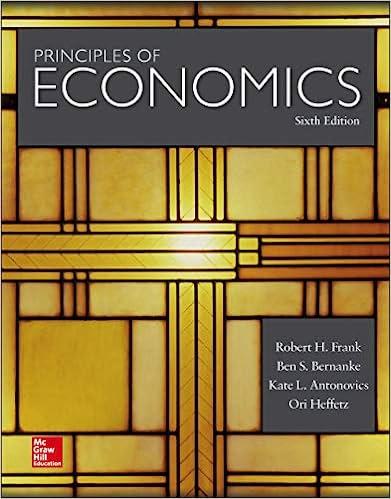Question
WASHINGTONThe Trump administration's trade initiatives have targeted China and other foreign powers, but it is U.S. consumers who have taken the hit, according to two
WASHINGTONThe Trump administration's trade initiatives have targeted China and other foreign powers, but it is U.S. consumers who have taken the hit, according to two new studies.
American consumers have been saddled with $69 billion in added costs because of the tariffs the U.S. imposed last year, including on $250 billion on Chinese imports as well as levies on steel and aluminum, according toa study released by a quartet of economists(Links to an external site.)
working on a National Science Foundation grant.
"U.S. consumers bear the incidence of the U.S. tariffs," said the authors, who include economists from UCLA, the University of California at Berkeley and Columbia University as well as Penny Goldberg, the chief economist of the World Bank.
The studies dispute President Trump's oft-repeated claim that the cost of tariffs are born by foreign countries. But the administration has also justified the tariffs as a long-term strategy to bring trading partners to the table, as has happened in negotiations over the North American Free Trade Agreement as well as with South Korea and China.
The U.S. had winners, too, the authors of the NSF-backed study saidstarting with the federal government, which collected an estimated $39 billion from the new tariffs.
The White House didn't respond to a request for comment.
U.S. manufacturers and producers, such as steel mills and washing-machine makers, boosted income by $23 billion because tariffs on foreign competition let them charge more for their products. The Trump administration has justified some of its trade protection on the grounds that these industries could make more money, and ultimately create more jobs, if tariffs leveled the playing field with foreign competitors.
Adding up the costs and benefits, the overall hit to the U.S. economy was $6.4 billion, the study foundrelatively scant damage in an economy of $21 trillion.
That assessment andone sponsored by the Centre for Economic Policy Research(Links to an external site.)
concluded that tariffs gave U.S. producers the ability to raise their prices when the tariffs were imposed on foreign competition. Those foreign companies raised their prices, too.
Both studies share a key conclusion: Although tariffs are formally assessed on U.S. importers when they bring in goods from foreign countries, the costs are passed on to consumers.
"We find that the U.S. tariffs were almost completely passed through into U.S. domestic prices," said the Centre for Economic Policy Research paper, written by economists from the Federal Reserve Bank of New York, Princeton University and Columbia. "The entire incidence of the tariffs fell on domestic consumers and importers up to now, with no impact so far on the prices received by foreign exporters."
They estimated that the tariffs, by the end of 2018, were responsible for reducing real U.S. national income by $1.4 billion a month.
Neither study attempted to quantify damage to the economy from economic uncertainty and stock-market volatility stemming from the administration's trade initiatives, which have been largely focused on correcting a growing trade imbalance with China.
The Commerce Department has formally justified its tariffs on steel and aluminum as necessary for national security, and is studying tariffs on automobiles, auto parts, uranium andit announced this weektitanium imports for national security reasons, too.
Questions:
- Who potentially benefits from a country placing tariffs on imported products? Who is potentially harmed? Explain.
- The article notes the burden of taxation (in this case tariffs). What is the burden of taxation?
- What are properties of the demand and supply functions in which only consumers in the country that imposes the tariff are harmed (i.e., the entire burden of the tariff falls on consumers)?
Step by Step Solution
There are 3 Steps involved in it
Step: 1

Get Instant Access to Expert-Tailored Solutions
See step-by-step solutions with expert insights and AI powered tools for academic success
Step: 2

Step: 3

Ace Your Homework with AI
Get the answers you need in no time with our AI-driven, step-by-step assistance
Get Started


